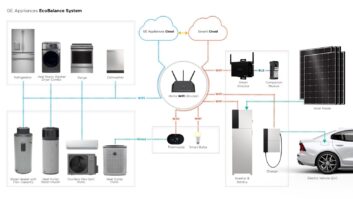Overland Park, Kan. – Sprint Nextel posted another wireless operating loss in the third quarter, when its subscriber base shrank by 423,000 to 56 million after seven consecutive quarters of subscriber gains, the company announced.
The subscriber base shrank because consumers postponed iPhone purchases until late-quarter availability of the iPhone 5 and because subscribers left the company’s 2G Nextel network at an accelerated rate as the network’s mid-2013 shutdown approaches, executives said.
The company also attributed its subscriber losses to a focus on recapturing Nextel subscribers to its 3G/4G Sprint network instead of luring subscribers from competing networks to Sprint. Recapturing Nextel subscribers is less costly than attracting new subscribers, the company said.
Although Sprint expanded its Sprint-network subscriber base in the quarter, it wasn’t enough to offset Nextel-network losses. The number of net new Sprint-network subscribers was down on a year-over-year and sequential basis.
In reporting its quarterly results, the No. 3 carrier by subscriber count also said its operating losses grew again despite a 7 percent wireless-revenue gain to $8.04 billion. The company cited the continuing cost of shutting down the Nextel network, improving its network infrastructure, and building out its LTE footprint.
Like before, executives promised a financial turnaround starting in 2014 as Sprint consolidates its separate Sprint and Nextel networks into one network to deliver cost savings and margin improvements, and as the benefits of costly iPhone subsidies kick in to lower churn and customer-care costs.
The iPhone was not available on the Sprint network during the year-ago period, contributing to an increase of $481 million in year-over-year phone-subsidy costs to $1.6 billion. The carrier’s handset-subsidy costs also grew because of the growing sales of other types of smartphones, whose subsidies are higher than feature-phone subsidies.
In the quarter, iPhone activations were flat sequentially, with the carrier posting 1.5 million iPhone activations in the third, second and first quarters following sales of 1.8 million in 2011’s fourth quarter, when Sprint began selling the device for the first time. Sprint’s iPhone sales were well behind rival AT&T and Verizon iPhone sales during all four quarters. Forty percent of iPhones sold in the third quarter went to new subscribers.
Here’s how the carrier’s metrics lined up:
Subscriber base: In the quarter, the Sprint posted its largest number of Nextel subscriber losses since the first quarter of 2008, or 1.3 million, as it approaches its mid-2013 target for shutting down the Nextel network. Nextel’s subscriber shrank to 3.1 million out of Sprint’s total subscriber base of 56 million.
On its Sprint network, the company posted its 11th consecutive quarter of net adds. The net adds of 883,000, however, were down from the year-ago gain of 1.94 million and down sequentially from the second-quarter’s 1.28 million gain.
For the combined Sprint and Nextel networks, the number of new subscribers fell by 423,000 to 56 million. In contrast, Sprint posted combined Nextel-Sprint net adds of more than 1 million in the six quarters ending in the first quarter. Second-quarter net adds slipped to 283,000.
As a result of the carrier’s third-quarter subscriber results, the carrier’s combined base of Sprint and Nextel subscribers shrank sequentially to 56 million from the second quarter’s 56.4 million.
Operating results: For the quarter, the carrier’s operating loss hit $281 million, down sequentially from a second-quarter loss of $681 million but a reversal of year-ago operating income of $131 million.
For the year to date, wireless operating losses hit $1.29 million compared to the year-ago period’s $244 million in operating income.
In wireless revenue, revenues were up 7 percent in the quarter to $8.04 billion and up 8 percent for the year to date to $24.1 billion. Sprint attributed the quarter’s gain to a 5 percent year-over-year increase in average revenue per user (ARPU) from postpaid Sprint-network users to $63.21 and to gains in the number of Sprint-network prepaid subscribers. The postpaid ARPU was the highest in more than six years, the company said.
Sprint-network postpaid churn was the best ever for a third quarter at 1.88 percent, but that was up sequentially from the second quarter’s 1.69 percent.
In other comments during an investors’ conference call:
–About 19,000 of more than 33,500 cell sites being built to consolidate the company’s networks and add LTE will be about one fiscal quarter behind schedule because of equipment delays.
–Sprint-network phones available beginning this year have been equipped to take advantage of Nextel’s 800MHz spectrum for voice calls. Beginning next year, Sprint-network handsets sold will add 800MHz for LTE data to increase LTE data capacity.
–The company will by year’s end will recertify subscribers to its government-subsidized Assurance brand of life-line prepaid service in response to regulatory changes. As a result, the company expects a significant number of inactive accounts to be turned off in the second quarter of 2013.













